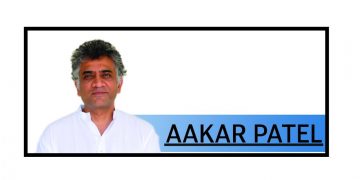The maiden two-day Belt and Road summit hosted in Beijing from May 14 was attended by a galaxy of world leaders, who sought a glimpse of the Chinese President Xi Jinping’s ambitious ‘go global’ policy – the country’s biggest political initiative since 1949. Of the 60 countries invited to the summit, just 27, including Russia, the US and the UK, attended the global meet. Xi claimed that the summit was successful in “reaching a broad consensus and achieving positive outcomes.”
The summit as well as the participation of the top powers of the world aside from friendly neighbours like Afghanistan, Bangladesh and Sri Lanka has caused many worries for India. Though India was also invited, the Modi government not only chose to boycott the event, but also raised strong objections to the ‘One Belt, One Road’ programme, emphasising that no country can accept any initiative that defies sovereignty and territorial integrity of other nations.
While China has been maintaining that OBOR, conceived by Xi in 2013, is a novel means to boost the slowing economies across the globe, experts view the initiative as an economic tool of China that aims to expand the country’s influence across continents and broaden its military capabilities further than its own borders and maritime limits. No doubt, Xi is an ambitious leader and his aim is to dominate the Eurasian trade by shutting out the US.
India’s objections to the so-called ‘Silk Road’ project are very pertinent although no one seems to be listening to New Delhi’s meek protests. India has claimed that such initiatives are against international laws, transparency, and sovereignty as well as global interests. New Delhi is of the view that supporting the OBOR project will only increase its already existing border problems, as it will help China to virtually encircle the country. In this context, India’s decision to abstain from the summit is understandable.
It may be noted that the Hambantota port, built with Chinese cooperation in Sri Lanka, is yet to be completed, and today the island nation is burdened with a debt of $8 billion only due to this project. There are several such instances in the African countries, which are enduring mounting debts. Thanks to the Chinese economic ambitions, these nations are witnessing a devastating environment with the victims of Xi’s signature foreign policy going deeper into the pit of despair.
This despair is manifested in the recent stand adopted by Laos and Myanmar vis-à-vis the ‘One Road, One Belt’ programme. Both these Southeast Asian nations have asked China to review some common projects. Similarly, the European Union (EU) has initiated a probe into the railway project undertaken by China between Belgrade and Budapest. Already, the Gilgit-Baltistan region in Pakistan-occupied Kashmir (PoK) is witnessing massive protests against the construction of the $54 billion China-Pakistan Economic Corridor (CPEC) project, an important segment of the Belt and Road initiative. In fact, most of the funds pumped by China into Pakistan are in the form of loans with high-interest rates.
India has been actively opposing the CPEC project, as it has included some Indian territories which are under the illegal occupation of Pakistan. This time too, New Delhi raised its voice against the project and placed its objections before China. India’s problems have increased following the participation of nations like the US and Russia in the Chinese initiative. India has always failed to give out a strong message to it’s not so friendly neighbour. It may be time to rethink our diplomatic strategy and revisit trade relations with China.






































